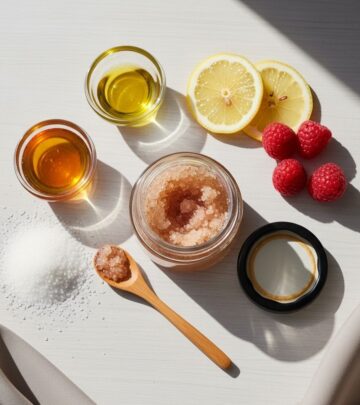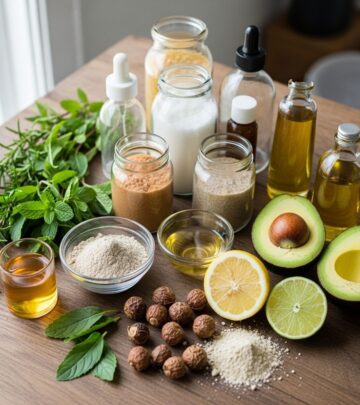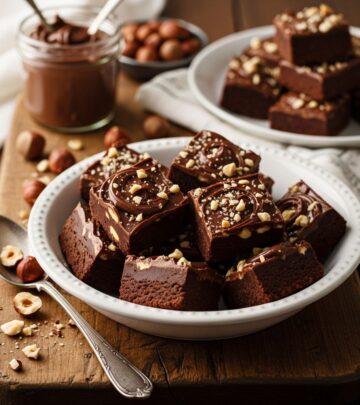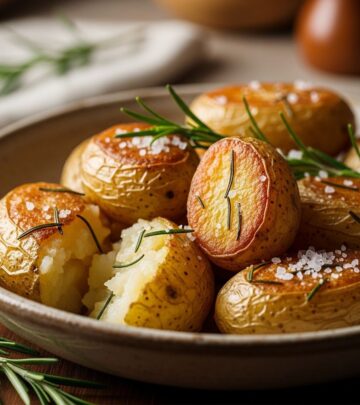Easy Ham and Cheese Quiche Recipe: Step-By-Step Guide
Master the art of creating a perfectly creamy, savory quiche that's ideal for any meal of the day

Image: HearthJunction Design Team
Introduction to the Perfect Quiche
Quiche has solidified its place as one of the most versatile and beloved dishes in home cooking. This classic ham and Swiss quiche recipe represents comfort food at its finest – a delicate balance of rich, savory flavors encased in a flaky, golden crust. Whether you’re hosting a brunch, planning a light dinner, or looking for make-ahead meal options, this quiche delivers on all fronts with its creamy egg custard, tender chunks of ham, and melted Swiss cheese.
What makes this particular quiche recipe special is its adaptability and reliability. It’s been passed down through generations, with the recipe contributor noting that her mother received it from a friend named Betty. The original creator would make large batches of these quiches, freezing them for easy meals whenever needed. This practical approach to home cooking demonstrates why quiche has remained a staple in so many households – it’s equally impressive served fresh from the oven or prepared days in advance.
The beauty of quiche lies in its perfect balance of textures and flavors. The custard filling is velvety and rich, complemented by the sharpness of Swiss cheese and the savory notes of ham. All of this is contained within a buttery, flaky crust that provides the ideal foundation. While this recipe features a classic ham and Swiss combination, the basic technique can be adapted to countless variations based on your preferences or what you have in your refrigerator.
The Three Core Components of Quiche
Creating a perfect quiche requires understanding and executing three fundamental elements: the crust, the egg custard, and the fillings. Each component plays a crucial role in the final result.
The Crust: Foundation of Flavor
While this recipe calls for a convenient store-bought frozen pie crust, the crust remains a critical element in quiche making. The crust serves as both a structural component and a flavor contributor. A good quiche crust should be flaky yet sturdy enough to hold the filling without becoming soggy. If using a pre-made crust as suggested in this recipe, ensure it’s fully thawed before adding your fillings. The recipe cleverly uses the technique of sprinkling the cheese-flour mixture directly onto the frozen crust, which helps create a barrier that prevents the egg mixture from making the crust soggy.
The Egg Custard: Heart of the Quiche
The custard mixture forms the heart of any quiche. In this recipe, the custard is a simple yet effective combination of eggs, milk, salt, and dried mustard. The proportions are key to achieving the perfect texture – three large eggs to one cup of milk creates a custard that’s firm enough to slice cleanly but still retains a luxurious creaminess. The original recipe notes that the creator’s mother used light cream instead of milk, which would result in an even richer custard. This highlights how you can adjust the richness of your quiche by varying the dairy component.
The Fillings: Customizable Flavors
The fillings are where you can really make a quiche your own. This classic recipe features ham and Swiss cheese, a time-tested combination that provides a perfect balance of savory flavors. The Swiss cheese is tossed with a small amount of flour before being added to the crust, which helps prevent the cheese from sinking to the bottom during baking. The ham adds a salty, meaty element that complements the creaminess of the custard. The optional garnishes of fresh parsley and pimento peppers add color and a fresh contrast to the rich filling.
Ingredients for Classic Ham and Swiss Quiche
The beauty of this quiche recipe lies in its simplicity. With just a handful of ingredients, you can create a dish that tastes like it came from a gourmet bakery. Here’s what you’ll need to gather before starting:
- 1 ½ cups shredded Swiss cheese
- 4 teaspoons all-purpose flour
- 1 (9 inch) unbaked pie crust, frozen
- ½ cup cooked ham, diced
- 3 large eggs
- 1 cup milk
- ¼ teaspoon salt
- ¼ teaspoon ground dry mustard
- 2 tablespoons chopped fresh parsley (for garnish)
- 2 tablespoons chopped pimento peppers (for garnish)
Each ingredient plays a specific role in the quiche. The Swiss cheese provides a nutty, slightly sweet flavor that melts beautifully into the custard. Tossing it with flour helps distribute the cheese evenly throughout the quiche instead of having it sink to the bottom. The ham adds a savory, salty component that complements the richness of the eggs and cheese.
The egg mixture forms the custard base of the quiche. The addition of dry mustard might seem unusual, but it adds a subtle depth of flavor that enhances the cheese without being overtly noticeable. The optional garnishes of parsley and pimento add visual appeal and a fresh contrast to the rich filling.
Step-by-Step Instructions
Creating a perfect quiche is straightforward when you follow these detailed steps:
Preparation
Begin by preheating your oven to 400 degrees F (200 degrees C). This relatively high temperature helps the crust set quickly, preventing sogginess. As your oven heats, prepare your ingredients. Shred the Swiss cheese if it isn’t already shredded, and dice the ham into small, even pieces. Having all components ready before assembly ensures a smooth process.
Assembling the Quiche
In a medium bowl, toss the shredded Swiss cheese with the all-purpose flour until the cheese is lightly coated. This simple step is crucial as it helps prevent the cheese from clumping together or sinking to the bottom of the quiche. Sprinkle this cheese and flour mixture evenly across the bottom of your frozen pie crust. Next, distribute the diced ham evenly over the cheese layer. This layering method ensures every slice of quiche will contain a good balance of ingredients.
In a separate bowl, combine the eggs, milk, salt, and dry mustard. Beat this mixture until it’s smooth and well-integrated. The dry mustard adds a subtle depth of flavor that complements the cheese beautifully. Pour this egg mixture carefully over the cheese and ham in the pie crust. The liquid should distribute evenly around the solid ingredients.
Baking Your Quiche
Before placing the quiche in the oven, protect the edges of the crust by covering them with foil. This prevents the exposed crust from burning while the filling cooks. Place the prepared quiche on the center rack of your preheated oven and bake for approximately one hour. The quiche is done when the filling is completely set and the crust has turned a beautiful golden brown. A simple test for doneness is to insert a knife into the center of the quiche – it should come out clean when the quiche is fully cooked.
Serving Suggestions
Allow your quiche to cool slightly before cutting to ensure clean slices. Before serving, garnish with chopped fresh parsley and pimento peppers if desired, adding both visual appeal and a fresh flavor contrast. Quiche can be served warm, at room temperature, or even cold, making it incredibly versatile for various occasions.
Make-Ahead and Storage Tips
One of the greatest advantages of quiche is its make-ahead potential. As mentioned in the recipe introduction, the original creator’s mother would make multiple quiches at once and freeze them for future use. This practical approach makes quiche an excellent option for busy households or for those who enjoy meal planning.
Refrigeration
If you plan to serve your quiche within a few days, refrigeration is the way to go. Once baked and cooled completely, cover the quiche tightly with plastic wrap or aluminum foil and store in the refrigerator for up to 3-4 days. When you’re ready to serve, you can enjoy it cold or reheat individual slices in the microwave for about 1 minute, or place the entire quiche (without plastic wrap) in a 350°F oven for about 10-15 minutes until warmed through.
Freezing
For longer storage, freezing is an excellent option. You can freeze quiche either before or after baking. To freeze an unbaked quiche, assemble it completely, then wrap it tightly in plastic wrap followed by aluminum foil or place it in a large freezer bag. When you’re ready to bake, you can place it directly in the oven from frozen – just add an extra 10-15 minutes to the baking time.
To freeze a baked quiche, allow it to cool completely, then wrap it securely and freeze for up to 2-3 months. Thaw overnight in the refrigerator before reheating in a 350°F oven until warmed through, usually about 20-25 minutes.
Variations and Customizations
While this classic ham and Swiss quiche is delicious as written, the basic formula can be adapted to countless variations. Here are some popular alternatives:
Cheese Options
Swiss cheese is traditional in this recipe, but don’t hesitate to experiment with other varieties. Gruyère offers a similar flavor profile with perhaps even more depth. Cheddar provides a sharper taste that pairs well with many ingredients. Goat cheese adds a tangy creaminess that works beautifully with vegetables. You can even blend multiple cheeses for a more complex flavor profile.
Protein Alternatives
If ham isn’t your preference, consider these alternatives: crispy bacon bits add a smoky flavor and delightful texture; sausage brings a spicy, hearty element; or go vegetarian with sautéed mushrooms for a meaty texture without the meat. Leftover roasted chicken is another excellent option that makes good use of leftovers.
Vegetable Additions
Adding vegetables not only introduces more nutrients but also brings color and texture to your quiche. Consider sautéed spinach or kale, roasted red peppers, caramelized onions, steamed broccoli, or asparagus. Just ensure any vegetables with high water content are pre-cooked and drained to prevent a soggy quiche.
Frequently Asked Questions
Q: Can I make this quiche without a crust?
A: Absolutely! For a crustless version, simply grease your pie dish well and pour the filling directly into it. Bake as directed, though you may need to reduce the cooking time slightly. This creates a gluten-free option that’s essentially a baked frittata.
Q: Why is my quiche watery?
A: Watery quiche typically results from either undercooking or using ingredients with high moisture content without properly preparing them. Ensure vegetables are sautéed to release their moisture before adding to the quiche, and bake until the center is completely set.
Q: Can I use milk alternatives in quiche?
A: Yes, unsweetened non-dairy milk alternatives like almond, soy, or oat milk can work in quiche, though they may alter the flavor and texture slightly. For the richest results with alternatives, consider using full-fat coconut milk or non-dairy creamer.
Q: Do I need to pre-bake (blind bake) the crust?
A: While this recipe doesn’t call for pre-baking the crust, doing so can help prevent sogginess. If you choose to pre-bake, line your crust with parchment and pie weights, bake at 375°F for about 10 minutes, then remove weights and bake 5 minutes more before adding fillings.
Q: What’s the best way to tell when a quiche is done?
A: A properly cooked quiche should be slightly jiggly in the center but not liquid. Insert a knife into the center – it should come out clean. The quiche will continue to set as it cools. If the crust is browning too quickly but the filling isn’t set, cover the entire quiche loosely with foil.
Serving and Pairing Suggestions
Quiche is remarkably versatile when it comes to serving occasions and accompanying dishes. Here are some suggestions to make the most of your ham and Swiss creation:
Meal Planning
For breakfast or brunch, pair quiche with fresh fruit, yogurt, or a simple green salad. For lunch, serve with a heartier salad featuring mixed greens and a light vinaigrette. For dinner, complement your quiche with roasted vegetables, a grain salad, or soup for a complete meal.
Beverage Pairings
Coffee or tea makes a natural morning pairing with quiche. For a special brunch, consider mimosas or a crisp white wine like Sauvignon Blanc or unoaked Chardonnay. A light beer or rosé also pairs beautifully with the savory flavors of ham and Swiss.
Whether served at room temperature for a picnic, warm from the oven for Sunday brunch, or reheated as a quick weeknight dinner, this classic ham and Swiss quiche is sure to become a favorite in your recipe collection. Its versatility, make-ahead potential, and delicious flavor profile make it a true kitchen staple worth mastering.
References
Read full bio of medha deb












